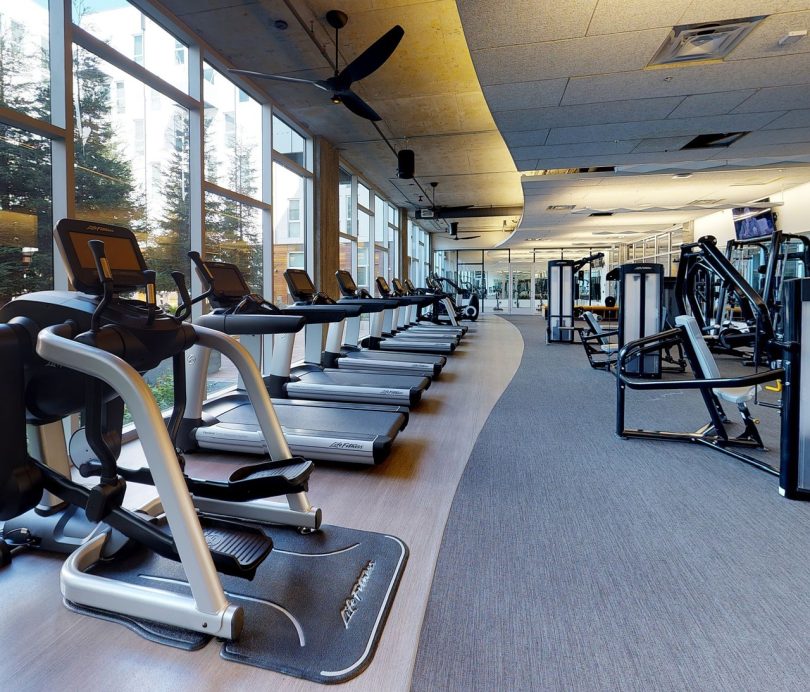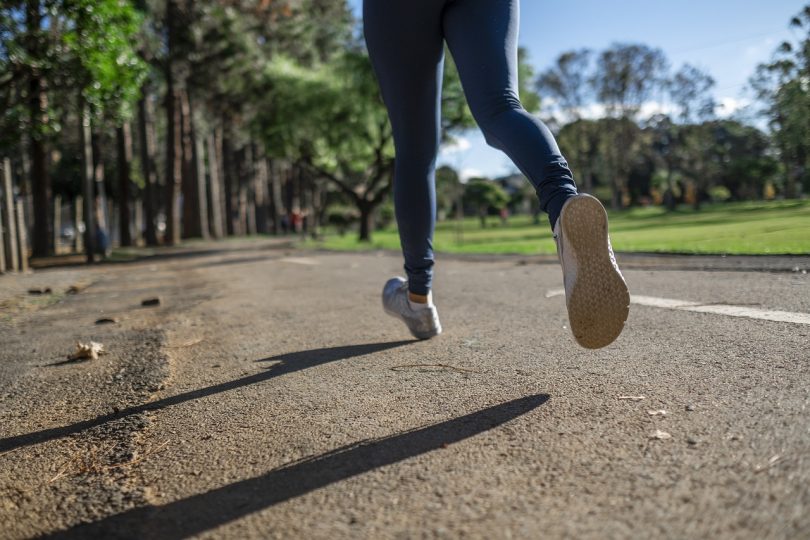In recent years, foam rolling has gained popularity as a go-to technique for relieving muscle tension and improving flexibility. Whether you’re an athlete looking to enhance your performance or someone wanting to alleviate everyday muscle aches, foam rolling can be a valuable addition to your fitness routine. In this ultimate guide, we will demystify foam rolling, explore its benefits, help you choose the right foam roller, provide essential tips for effective foam rolling, and maximize your foam rolling experience with a quick and effective routine.
Demystifying Foam Rolling
Foam rolling involves using a cylindrical foam roller to apply pressure to various muscles in your body. It works by using your body weight and rolling the targeted muscle groups over the roller, helping to release tension and knots. Many people describe the sensation as a deep tissue massage that can be performed anytime and anywhere.
While foam rolling may seem simple, there is more to it than just random rolling. It’s important to understand the physiology behind it to maximize its benefits. When you roll, the pressure on your muscles and fascia stimulates blood flow and breaks up adhesions between muscle layers. This helps to improve circulation, increase range of motion, and reduce post-workout soreness.
Let’s dive deeper into the benefits of foam rolling. One of the key advantages is its ability to enhance muscle recovery. After an intense workout, your muscles can become tight and sore. Foam rolling can help alleviate this discomfort by increasing blood flow to the muscles, which promotes the delivery of oxygen and nutrients. This improved circulation aids in the removal of metabolic waste products, such as lactic acid, reducing muscle soreness and speeding up recovery.
Moreover, foam rolling can also improve your flexibility and range of motion. By targeting specific muscle groups, you can release tightness and adhesions, allowing for better movement. This is particularly beneficial for athletes and individuals who engage in activities that require a wide range of motion, such as yoga or weightlifting. Regular foam rolling can help you achieve better flexibility, enabling you to perform exercises and movements with greater ease and efficiency.
In addition to its physical benefits, foam rolling can also have a positive impact on your mental well-being. The act of foam rolling can be meditative and relaxing, providing a moment of self-care and mindfulness. As you focus on the sensations in your muscles and the rhythmic movement of rolling, you can experience a sense of calm and stress relief. Incorporating foam rolling into your routine can be a valuable tool for managing stress and promoting overall mental wellness.
It’s worth noting that foam rolling is not a one-size-fits-all solution. Different muscle groups may require different techniques and pressure levels. It’s important to listen to your body and adjust accordingly. If you experience any pain or discomfort during foam rolling, it’s best to consult with a healthcare professional or a certified trainer who can guide you in proper form and technique.
In conclusion, foam rolling is a versatile and effective practice that offers numerous benefits for your physical and mental well-being. By incorporating foam rolling into your fitness routine, you can enhance muscle recovery, improve flexibility, and promote relaxation. So, grab your foam roller and start rolling your way to a healthier and happier you!
Exploring the Benefits of Foam Rolling
The benefits of foam rolling are vast and encompass both physical and mental aspects of well-being. First and foremost, foam rolling can help reduce muscle soreness and prevent muscle imbalances. By releasing tension in your muscles, you are less likely to experience post-workout stiffness and pain. Additionally, foam rolling can enhance recovery by promoting faster muscle repair and reducing inflammation.
Beyond the physical benefits, foam rolling can also be a form of self-care and relaxation. Taking the time to connect with your body and relieve muscle tension can have a profound impact on your mental well-being. It can help to relieve stress, improve sleep quality, and promote a sense of overall calmness.
When you engage in foam rolling, you are not only targeting specific muscle groups but also stimulating the fascia, the connective tissue that surrounds your muscles. This can lead to improved flexibility and range of motion, allowing you to move more freely and efficiently in your daily activities and workouts.
Moreover, foam rolling can be a valuable tool for injury prevention. By regularly foam rolling, you can identify areas of tightness or weakness in your muscles and address them before they become more serious issues. This proactive approach to injury prevention can help you maintain an active lifestyle and minimize the risk of long-term injuries.
In addition to its physical benefits, foam rolling can also have a positive impact on your posture. Many people spend long hours sitting at desks or engaging in activities that cause muscle imbalances and poor posture. Foam rolling can help release tension in the muscles that contribute to poor posture, allowing you to stand taller and with better alignment.
Furthermore, foam rolling can be a valuable tool for athletes and fitness enthusiasts looking to improve their performance. By incorporating foam rolling into your warm-up routine, you can increase blood flow to your muscles, improve muscle activation, and enhance overall performance. Additionally, foam rolling can aid in the recovery process after intense workouts, reducing muscle fatigue and promoting faster muscle repair.
Lastly, foam rolling can be a versatile practice that can be adapted to your specific needs and preferences. Whether you prefer a gentle and relaxing foam rolling session or a more intense and targeted approach, there are various foam rolling techniques and tools available to suit your individual preferences.
In conclusion, foam rolling offers a multitude of benefits for both your physical and mental well-being. From reducing muscle soreness and preventing imbalances to promoting relaxation and improving performance, foam rolling can be a valuable addition to your self-care routine. So, grab your foam roller and start experiencing the many advantages that foam rolling has to offer!
Choosing the Right Foam Roller for You
When it comes to foam rollers, there are various options to choose from. The most common types are foam, textured, and vibrating foam rollers. The choice depends on your personal preferences and needs. Foam rollers are the most basic and affordable option, suitable for beginners and general use. Textured rollers feature grooves or bumps that target specific areas and provide a deeper massage. Vibrating foam rollers, on the other hand, add an extra level of intensity and vibration to enhance muscle relaxation.
But how do you know which foam roller is the right one for you? Let’s dive deeper into the factors you should consider when selecting a foam roller.
First and foremost, size matters. A longer roller allows you to target larger muscle groups, such as your back or thighs, with ease. It provides a wider surface area for rolling, distributing the pressure more evenly. On the other hand, a smaller roller is more suitable for precise, targeted areas like your calves or forearms. It allows for better control and can reach those hard-to-reach spots.
Next, let’s talk about density. Density refers to how firm the roller feels when you apply pressure on it. A softer roller may be ideal for beginners or individuals with sensitive areas. It provides a gentler massage and is less likely to cause discomfort. On the contrary, a firmer roller offers deeper tissue release and can help break up knots or tight muscles. It’s perfect for those who prefer a more intense massage or need to target specific trigger points.
Now, let’s discuss surface texture. The surface texture of a foam roller can vary between smooth and textured. Smooth rollers provide a more even and consistent pressure across your muscles. They are great for general use and can help improve blood circulation and flexibility. On the other hand, textured rollers feature ridges, grooves, or bumps that provide a more intense massage. They can target specific areas and help release tension more effectively. However, keep in mind that the intensity of the massage may vary depending on the depth and design of the texture.
When choosing a foam roller, it’s essential to consider your specific needs and preferences. If you’re a beginner or looking for a versatile option, a basic foam roller may be the best choice. If you want to target specific areas or need a deeper massage, a textured roller with varying surface patterns can be beneficial. And if you’re looking for an extra level of relaxation and muscle relief, a vibrating foam roller might be worth considering.
Remember, the right foam roller for you is the one that suits your body’s unique requirements. Experiment with different sizes, densities, and surface textures to find the perfect match. Whether you’re using a foam roller for post-workout recovery, injury prevention, or general muscle maintenance, investing in the right one can make a significant difference in your overall well-being.
Essential Tips for Effective Foam Rolling
To make the most of your foam rolling sessions, follow these essential tips:
- Always warm up before foam rolling to increase blood flow to your muscles.
- Start with lighter pressure and gradually increase as your muscles relax.
- Roll slowly over the targeted area, pausing on any areas of tenderness or tightness.
- Breathe deeply and relax your body to allow the tension to release.
- Drink plenty of water before and after foam rolling to stay hydrated and aid in muscle recovery.
- Be consistent with your foam rolling routine to experience long-term benefits.
Maximizing Your Foam Rolling Experience
In order to get the most out of your foam rolling practice, it’s important to incorporate targeted exercises that complement your foam rolling routine. Here are some additional techniques you can incorporate:
Relieving Upper Back Tension with Foam Rolling
A common area of tension for many individuals is the upper back. To target this area, place the foam roller behind your upper back, supporting your head with your hands. Roll up and down the length of your upper back, pausing on any tight or tender spots.
Enhancing Flexibility with Quadruped Cat/Cow Stretch
Combine foam rolling with a gentle stretching exercise to improve flexibility. Start on all fours and arch your back up like a cat, then lower your belly and lift your head and chest like a cow. Repeat this movement while rolling your quadriceps on the foam roller for a deep stretch.
Targeting Glute Muscles with Foam Rolling
For tight glute muscles, sit on the foam roller with your hands supporting your body behind you. Cross one ankle over the opposite knee and roll back and forth over the glute muscle on the same side. Switch sides and repeat.
Loosening Up with Supine Knees to Chest Stretch
Lie flat on your back with the foam roller positioned under your knees. Bring your knees towards your chest, gently hugging them in. Roll side to side, massaging your lower back and hips.
Foam Rolling for Stronger Quadriceps
To target the quadriceps, lie face down with the foam roller positioned under your thighs. Roll up and down the front of your thighs, focusing on any tight or tender areas. Relax your body and allow the foam roller to do the work.
Stretching and Strengthening with Standing Quadriceps Stretch
Combine foam rolling with a standing quadriceps stretch for a comprehensive exercise. While standing, hold onto a wall or chair for balance. Bend one knee and bring your heel towards your glute, grabbing your ankle with your hand. Roll your quadriceps on the foam roller while maintaining the stretch.
Quick and Effective Foam Roller Routine
Now that you have a grasp of foam rolling basics and targeted exercises, let’s dive into a quick routine to maximize your foam rolling experience:
- Start by rolling your calves. Place the foam roller under your calves and roll up and down the length of your calves, pausing on any tight spots.
- Move to your hamstrings. Position the foam roller underneath your thighs and roll from your knees to your glutes, applying gentle pressure as needed.
- Next, target your glutes. Sit on the foam roller and cross one ankle over the opposite knee. Roll back and forth over the glute muscle on the same side, then repeat on the other side.
- Roll your quadriceps by positioning the foam roller under your thighs while lying face down. Roll up and down the front of your thighs, focusing on any areas of tension.
- Transition to your upper back by placing the foam roller behind your upper back and supporting your head with your hands. Roll up and down the length of your upper back, pausing on any tight or tender spots.
- Finish the routine by rolling your lats. Lie on your side with the foam roller positioned under your armpit. Roll up and down the side of your body, focusing on the area between your shoulder and hip.
Remember, consistency is key when it comes to foam rolling. Make it a part of your regular fitness routine to reap the benefits of improved muscle recovery, flexibility, and overall well-being. Incorporate the techniques and exercises mentioned in this guide, and you’ll be well on your way to a more effective and satisfying foam rolling experience.








